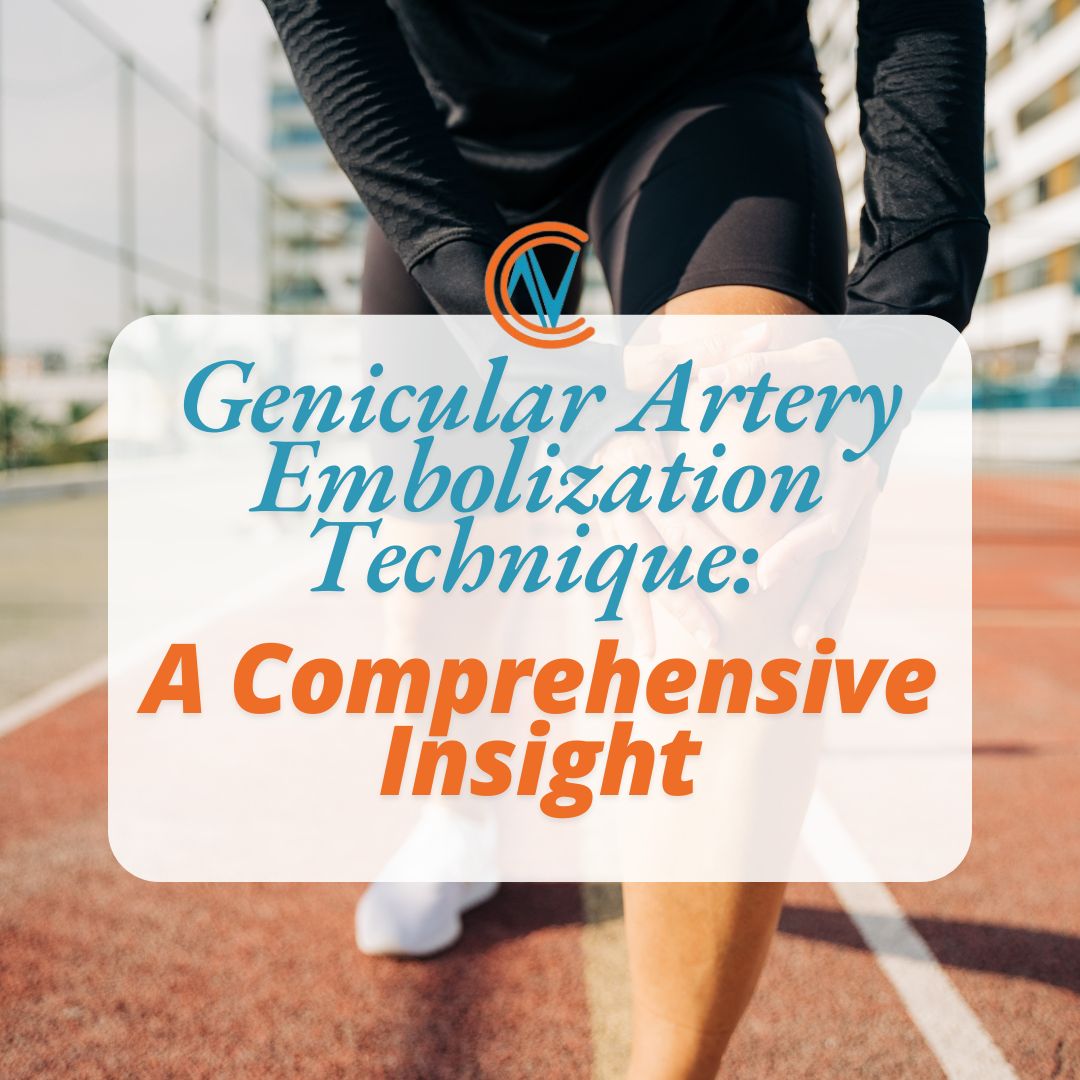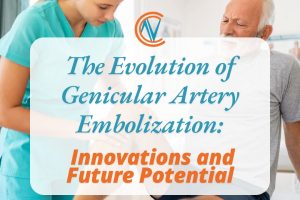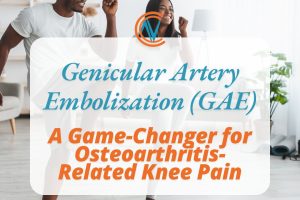
Genicular Artery Embolization Technique: A Comprehensive Insight
Introduction to Genicular Artery Embolization Technique: A Comprehensive Insight
Chronic knee pain is a common and often debilitating condition affecting millions worldwide, particularly those suffering from osteoarthritis. Traditional treatments range from pain management and physical therapy to invasive surgical interventions such as knee replacement. In recent years, Genicular Artery Embolization (GAE) has emerged as a promising, minimally invasive alternative that offers significant pain relief without the need for major surgery. This article explores the intricacies of the GAE technique, its applications, benefits, and the science behind its success.
Understanding Genicular Artery Embolization (GAE)
GAE is an interventional radiology procedure designed to alleviate knee pain by targeting and reducing the blood supply to inflamed areas of the knee. By selectively blocking the genicular arteries, which supply blood to the synovium (the lining of the knee joint), GAE reduces inflammation, thereby easing pain and improving functionality.
The Science Behind GAE
Chronic knee pain, particularly from osteoarthritis, often involves inflammation of the synovium. This inflammation leads to increased blood flow and the formation of abnormal blood vessels (angiogenesis). GAE works by using embolic agents to occlude these abnormal vessels, reducing blood flow and inflammation.
Indications for GAE
While GAE is a highly effective treatment, it is not suitable for every patient. Ideal candidates include:
- Patients with knee osteoarthritis: Particularly those with moderate to severe pain who have not responded to conservative treatments.
- Patients seeking alternatives to surgery: For individuals who are not ready or medically eligible for knee replacement surgery.
- Patients with chronic knee pain: Those suffering from pain due to inflammation rather than mechanical issues.
GAE is less effective in cases of advanced joint damage or structural abnormalities that require surgical correction.
The GAE Procedure: Step-by-Step
1. Pre-Procedure Evaluation
- Medical History: A thorough review of the patient’s medical history and prior treatments.
- Imaging: MRI or X-rays to assess the severity of osteoarthritis and identify areas of inflammation.
- Patient Selection: Ensuring the patient meets the criteria for GAE.
2. Preparation for GAE
- Consent and Education: Patients are informed about the procedure, risks, and benefits.
- Sedation: Typically performed under local anesthesia with mild sedation.
- Sterile Environment: The procedure is carried out in a sterile interventional radiology suite.
3. The GAE Procedure
- Arterial Access: A small incision is made in the groin or wrist to insert a catheter into the femoral or radial artery.
- Navigation: Using fluoroscopic imaging, the catheter is guided to the genicular arteries supplying the inflamed synovium.
- Embolization: Embolic agents, such as microspheres or polyvinyl alcohol particles, are injected to block blood flow to the targeted areas.
- Verification: Contrast dye is used to confirm successful occlusion of the abnormal vessels.
4. Post-Procedure Care for GAE
- Observation: Patients are monitored for a few hours to ensure there are no immediate complications.
- Pain Management: Mild discomfort at the insertion site is managed with over-the-counter medications.
- Follow-Up: Regular follow-up visits to assess pain relief and functional improvement.
Benefits of GAE
1. Minimally Invasive GAE is performed through a small incision, significantly reducing recovery time and associated risks compared to surgical procedures.
2. Effective Pain Relief Studies have shown that GAE provides substantial and sustained pain relief for many patients with knee osteoarthritis.
3. Rapid Recovery Most patients can return to normal activities within a few days of the procedure.
4. Alternative to Surgery For patients unwilling or unable to undergo knee replacement, GAE offers a viable alternative.
5. Reduced Risk of Complications GAE has a low risk of complications, particularly when performed by experienced interventional radiologists.
Potential Risks and Limitations
Although GAE is generally safe, like any medical procedure, it carries some risks:
- Bleeding or bruising: At the catheter insertion site.
- Non-Target Embolization: Accidental blockage of non-target vessels, leading to tissue damage.
- Allergic Reaction: To the contrast dye or embolic agents.
- Infection: At the site of catheter insertion, though rare.
- Variable Outcomes: While many patients experience significant pain relief, some may see limited improvement.
Clinical Evidence Supporting GAE
Numerous studies have demonstrated the efficacy and safety of GAE:
- Randomized Controlled Trials: Showed significant reductions in pain scores and improved quality of life for GAE patients compared to control groups.
- Long-Term Outcomes: Studies indicate sustained pain relief for up to two years post-procedure in many cases.
- Safety Profile: Reported complications are rare and typically minor.
Advancements in GAE Technology
The field of interventional radiology is continually evolving, and GAE is no exception. Recent advancements include:
- Improved Imaging Techniques: Enhanced fluoroscopy and cone-beam CT provide better visualization of vascular structures.
- Innovative Embolic Agents: Development of bioresorbable particles and drug-eluting embolics to improve outcomes.
- Robotic-Assisted Procedures: Increasing precision and reducing procedure time.
Patient Testimonials and Real-Life Success Stories
Many patients who have undergone GAE report transformative experiences:
- Testimonial 1: “After years of debilitating knee pain, GAE gave me my life back. I can walk and exercise without constant discomfort.”
- Testimonial 2: “I was skeptical at first, but the results were amazing. My pain levels dropped significantly within weeks.”
- Testimonial 3: “GAE was a game-changer for me. I avoided knee surgery and got the relief I needed.”
GAE vs. Other Treatments
Conservative Treatments: Physical therapy and medications provide temporary relief but often fail to address the root cause of pain.
Surgical Options: Knee replacement is effective but comes with higher risks, longer recovery times, and significant costs.
GAE: Offers a middle ground with minimal risks, rapid recovery, and long-lasting pain relief.
Cost and Insurance Coverage
The cost of GAE varies depending on location and provider but typically ranges from $5,000 to $15,000. Many insurance plans now cover GAE, especially for patients with documented knee osteoarthritis who have exhausted conservative treatment options.
Genicular Artery Embolization is revolutionizing the treatment of chronic knee pain, offering a safe, effective, and minimally invasive alternative to traditional therapies. As clinical evidence continues to mount and technology advances, GAE is poised to become a standard of care for knee osteoarthritis. For patients seeking relief from chronic pain without the risks of surgery, GAE represents a beacon of hope.
FAQs for Genicular Artery Embolization Technique: A Comprehensive Insight
-
How long does the GAE procedure take?
- Typically, the procedure lasts 1-2 hours.
-
Is GAE painful?
- Most patients experience minimal discomfort during and after the procedure.
-
How soon will I see results?
- Many patients report noticeable pain relief within a few weeks.
-
Can GAE be repeated?
- Yes, if necessary, GAE can be performed again for recurrent symptoms.
-
Who performs GAE?
- GAE is performed by interventional radiologists with specialized training in vascular procedures.


